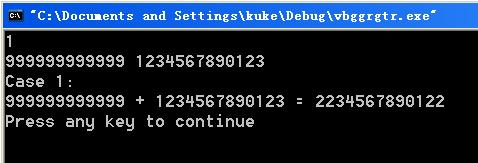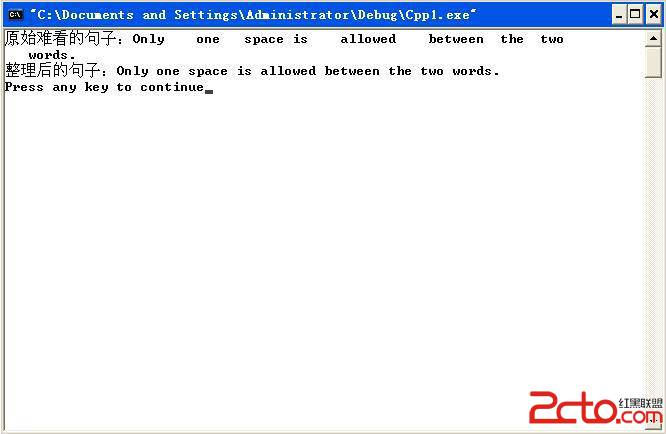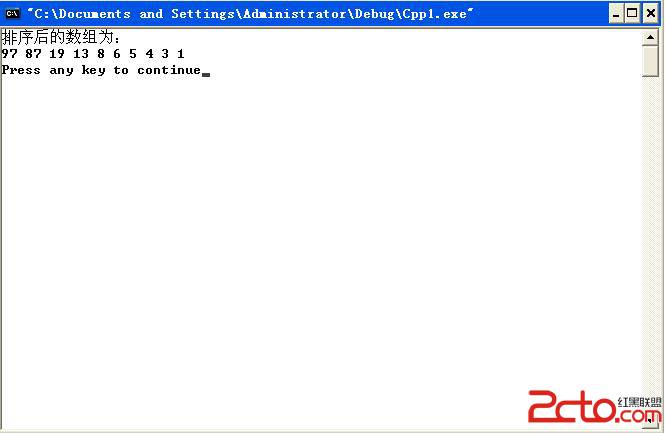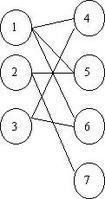问题九十七:Reverse Number
[plain] Give you an integer; your task is to output its reverse number. Here, reverse number is defined as follows:
1. The reverse number of a positive integer ending without 0 is general reverse, for example, reverse (12) = 21;
2. The reverse number of a negative integer is negative, for example, reverse (-12) = -21;
3. The reverse number of an integer ending with 0 is described as example, reverse (1200) = 2100.
Input
Input file contains multiple test cases. There is a positive integer n (n<100) in the first line, which means the number of test cases, and then n 32-bit integers follow.
Output
For each test case, you should output its reverse number, one case per line.
Sample Input
3
12
-12
1200
Sample Output
21
-21
2100
Give you an integer; your task is to output its reverse number. Here, reverse number is defined as follows:
1. The reverse number of a positive integer ending without 0 is general reverse, for example, reverse (12) = 21;
2. The reverse number of a negative integer is negative, for example, reverse (-12) = -21;
3. The reverse number of an integer ending with 0 is described as example, reverse (1200) = 2100.
Input
Input file contains multiple test cases. There is a positive integer n (n<100) in the first line, which means the number of test cases, and then n 32-bit integers follow.
Output
For each test case, you should output its reverse number, one case per line.
Sample Input
3
12
-12
1200
Sample Output
21
-21
2100
[plain] <PRE class=plain name="code">#include <stdio.h>
int main()
{
int i;
int j;
int n;
int tab; //标记末尾是否有零
int num;
int flag; //标记是否是正负数
int count;
int array[100]; //存储各位的数值
scanf("%d", &n);
while(n--)
{
scanf("%d", &num);
j=0;
tab=1; //假设末尾有零
flag=1; // 正数为1
count=0;
if(num<0 )
{
flag=0; //负数
num=-1* num;
}
while(num)
{
if(num%10==0 && tab!=0)
{
count++; //计算零的个数
}
else
{
array[j++]=num%10;
tab=0;
}
num/=10;
}
if(flag==0)
{
printf("-");
}
for(i=0; i<j; i++)
{
printf("%d", array[i]);
}
for(i=0; i<count; i++) //打印末尾零的个数
{
printf("0");
}
if(n>0)
{
printf("\n");
}
}
return 0;
}
</PRE><BR>
<BR>
<PRE></PRE>
<P> </P>
<PRE></PRE>
<PRE></PRE>
补充:软件开发 , C语言 ,




